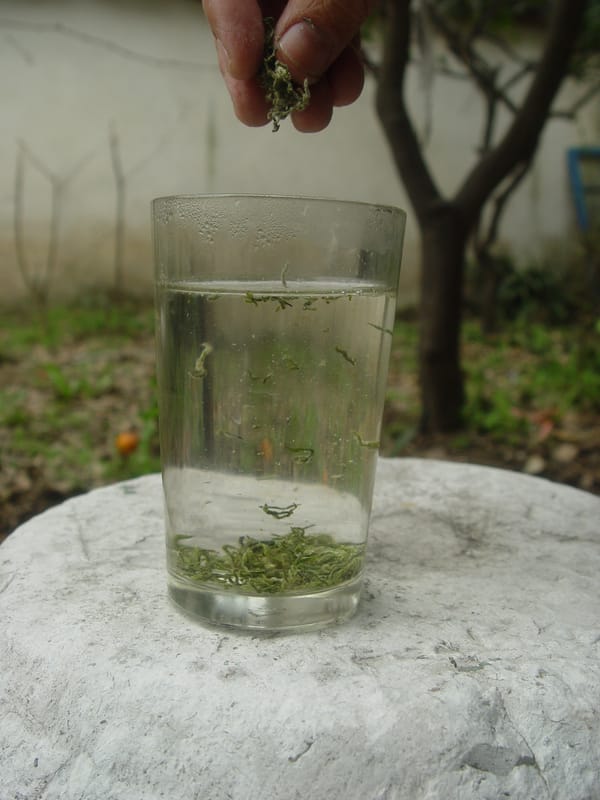Have you ever found tea tastings dull or struggled to find the right food pairing for Biluochun?
Many tea lovers face this challenge: even a premium Biluochun can lose its charm when paired with the wrong tea snack. The essence of pairing with Biluochun lies in one core principle—balance between acidity, sweetness, and astringency. This delicate green tea from Jiangnan is light and low in bitterness, making it the perfect partner for thoughtfully selected tea snacks.
By mastering the three pillars of pairing—acidity, sweetness, and astringency—you can unlock the true beauty of Biluochun and experience the harmony at the heart of traditional tea gatherings.
Let’s explore the legacy of Suzhou’s century-old tea snack culture and key pairing tips from both sides of the Taiwan Strait.
Basic Principles for Pairing with Biluochun
The subtle flavor of Biluochun should never be overpowered by snacks. Proper pairings enhance the experience, transforming a simple tea session into a moment of shared joy.
Tea brings people together. Biluochun’s clean taste and low astringency ease the spirit, allowing one to feel light and joyful. The key to a successful pairing is balance. Examine the acidity, sweetness, and astringency of the snack to find the perfect match. This is not just a sensory delight—it’s tea aesthetics in action.
Acidity: The Elegance of Plum Pairings
For acidity, light sourness is best—choose naturally preserved plums without artificial sweeteners.
Top Choice: Crisp Green Plum (Cuimei)
Crisp green plums are preferred over aged or pickled versions, which may become overly acidic and interfere with Biluochun’s fragrance. Avoid heavily salted varieties like white plums.
A hint of tartness awakens the palate and enhances Biluochun’s floral aroma, creating a multi-layered experience reminiscent of fruit-infused teas.
Sweetness: The Art of Pastry Pairing
High-sugar snacks like pastries require careful selection. Avoid those made with animal fats or artificial coloring.
Green Bean Cake Tips:
- Natural yellow color without added dyes
- Smooth, crumbly texture
- Leaves no heavy, sugary aftertaste
A sip of Biluochun transforms the sweetness of sugar into a light, honey-like note. This gentle contrast allows both the tea and the pastry to shine without overwhelming each other.
Astringency: Respecting Natural Purity
Biluochun is pan-fried and made from tender buds, which results in low astringency. Overly astringent snacks may ruin the tea’s clean taste.
Best Practices:
- Avoid plums or olives marinated in licorice or herbal syrup—they mask the natural finish and clash with Biluochun.
- Opt for naturally dried, unseasoned olives.
Nut Pairings:
- Pine nuts, peanuts, sunflower seeds, pistachios contain rich oils.
- When paired with Biluochun, they can produce a pleasant chestnut-like aroma.
- Choose unsalted, unseasoned versions. Salted pine nuts are a great choice—their mild saltiness draws out Biluochun’s clarity.
Tea Snack Highlights from Suzhou
Suzhou is a cradle of tea snack culture, shaped by its residents’ passion for tea.
Daoxiang Village: A Seasonal Tea Snack Icon
This shop releases snacks in tune with the seasons: apricot sesame cakes in spring, mint and mung bean cakes in summer, walnut crisps in winter. Their commitment to seasonality revives old traditions.
Ye Shou He: A Blend of Suzhou and Ning-style Pastries
Founded in 1880, their green bean cakes are light and fragrant. The “four-color slice cakes” are highly recommended. With tea, their sweetness melts smoothly on the tongue, inviting another sip.
Caizhizhai: The Imperial Sugar Legend
Established in 1870 and once favored by Empress Dowager Cixi, their pine nut sugar delights with delicate sweetness and nutty aroma. When paired with Biluochun, the fragrance fills the mouth like spring air.
Biluochun Pairings from Taiwan
San Hsieh Cheng Bakery – Kumquat Cake
This century-old bakery in Tamsui uses fresh kumquats to create cakes that, when paired with Biluochun, evoke a floral fruit tea infusion.
Li Hu Bakery – Pineapple Cake
Established in 1882, their pineapple cakes have a soft crust and refined sweetness. The crisp shell contrasts beautifully with the tea’s delicacy.
Practical Tea Pairing Tips
Before the Session:
- Avoid strong scents (lipstick, perfume)
- Keep the palate clean and sensitive
- Choose a calm setting
Order of Tasting:
- First, taste the tea alone
- Then, introduce the snack
- Let the balance unfold naturally
Portion Control:
- Use small portions
- Do not overpower the tea
- Seek harmony, not competition
Final Notes
Pairing Biluochun is about balance—of acidity, sweetness, and astringency. Through these principles, you’ll find snacks that highlight the tea’s clarity, deepen your appreciation of tea aesthetics, and create a more refined tasting experience.
Try This Today:
- Choose natural, additive-free snacks like crisp green plums and traditional mung bean cakes.
- Visit heritage shops in Suzhou or Taiwan to explore authentic tea snack culture.
- Create a tea space at home to experiment with pairings.
- Share tea time with others and embrace the harmony of a guest-free gathering.
Tea is solitary, focused, and intentional. Mastering the Biluochun pairing philosophy will enrich not just the flavor but the relationships fostered across the tea table.


